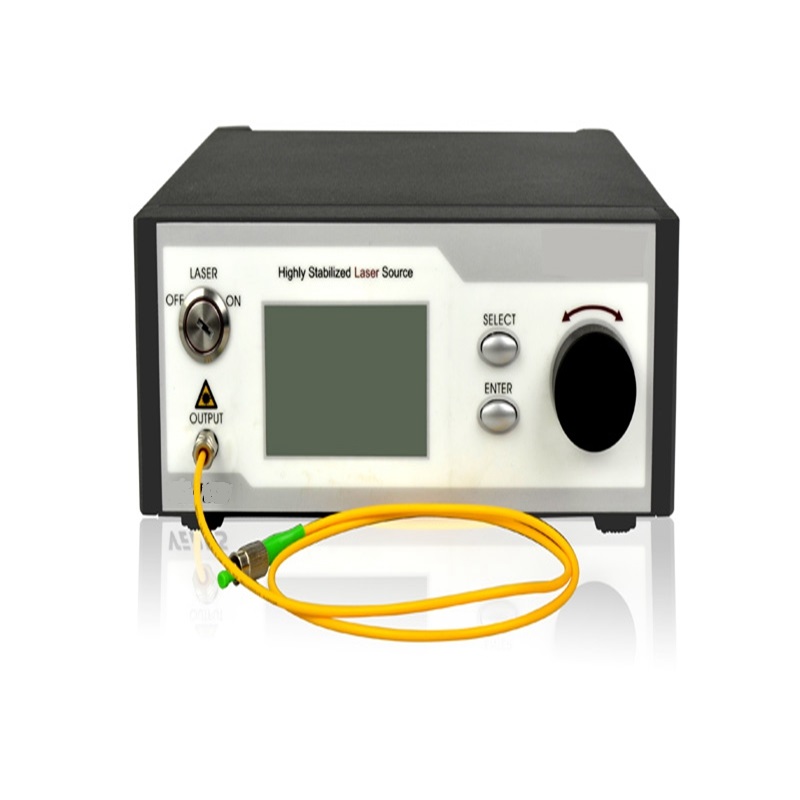We provide benchtop SLED broadband light sources that cover the wavelength from 400nm to 1620nm. SLED sources have higher output power density compared to LED sources. They can be used to test optical components, systems or links, or used as incoherent broadband light source for applications in optical sensoring, spectrum slicing, and microwave photonics.
Central Wavelength (nm)
Spectrum Width (-3dB,nm)
Output Power (uW)
Spectrum Density Stability < +- 0.05dB/15 min.
Short Term Stability < +- 0.01dB/15 min.
Long Term Stability < +- 0.05dB/15 min.
Operating mode CW, internal modulation, external modulation
Internal Modulation Square wave, 270Hz,1kHz,2kHz, duty cycle 50+-10%
External Modlation Digital or analog signals, DC to 10Mhz, TTL, BNC connector
Fiber Pigtail Single Mode (SMF – 28)
Output connector Type FC/PC, FC/UPC or FC/APC
Features:
Highly stable output power
Wide band optical output spectrum
Applications:
Optical component tests
Optical system tests
1140nm SLED Broadband Light Source
Central Wavelength (nm):
Each SLED Broadband Light Source Fiber laser Source has a central wavelength, from 400nm to 2000nm. And we will have other wavelengths in future.
In telecommunications, spectral width is the wavelength interval over which the magnitude of all spectral components is equal to or greater than a specified fraction of the magnitude of the component having the maximum value.
In optical communications applications, the usual method of specifying spectral width is the full width at half maximum. This is the same convention used in bandwidth, defined as the frequency range where power drops by less than half (at most −3 dB).
The FWHM method may be difficult to apply when the spectrum has a complex shape. Another method of specifying spectral width is a special case of root-mean-square deviation where the independent variable is wavelength, λ, and f (λ) is a suitable radiometric quantity.
The relative spectral width, Δλ/λ, is frequently used where Δλ is obtained according to note 1, and λ is the center wavelength.
Output Power (mW):
Each SLED Broadband Light Source Fiber laser Source has an output power. It depends on the application in which it will be used.
Spectral Density Stability < +- 0.05dB/15 min. :
The power spectrum of a time series describes the distribution of power into frequency components composing that signal.According to Fourier analysis, any physical signal can be decomposed into a number of discrete frequencies, or a spectrum of frequencies over a continuous range. The statistical average of a certain signal or sort of signal (including noise) as analyzed in terms of its frequency content, is called its spectrum. Spectral Density Stability is the stability for Spectral Density.
Short Term Stability < +- 0.01dB/15 min.
Long Term Stability < +- 0.05dB/15 min.
Operating mode CW, internal modulation, external modulation
Internal Modulation Square wave, 270Hz,1kHz,2kHz, duty cycle 50+-10%
External Modlation Digital or analog signals, DC to 10Mhz, TTL, BNC connector
Fiber Pigtail Single Mode (SMF – 28)
Output connector Type FC/PC, FC/UPC or FC/APC
Superluminescent Light Emitting Diodes (SLED) Broadband Light Sources rely on the high accuracy automatic power control (APC) and the automatic temperature control (ATC) techniques.1650nm SLED Broadband Light Source has high stability and reliability.1650nm SLED Broadband optical laser source is designed with different output power available to meet your specific use.SLED Broadband Light Sources can be sorted by working wavelength,saying 650nm SLED,750nm SLED,850nm SLED,980nm SLED,1310nm SLED,480nm SLED,1550nm SLED,1620nm SLED,1650nm SLED,800~1100nm,1250~1650nm,1250~1700nm,1220~1700nm etc.
